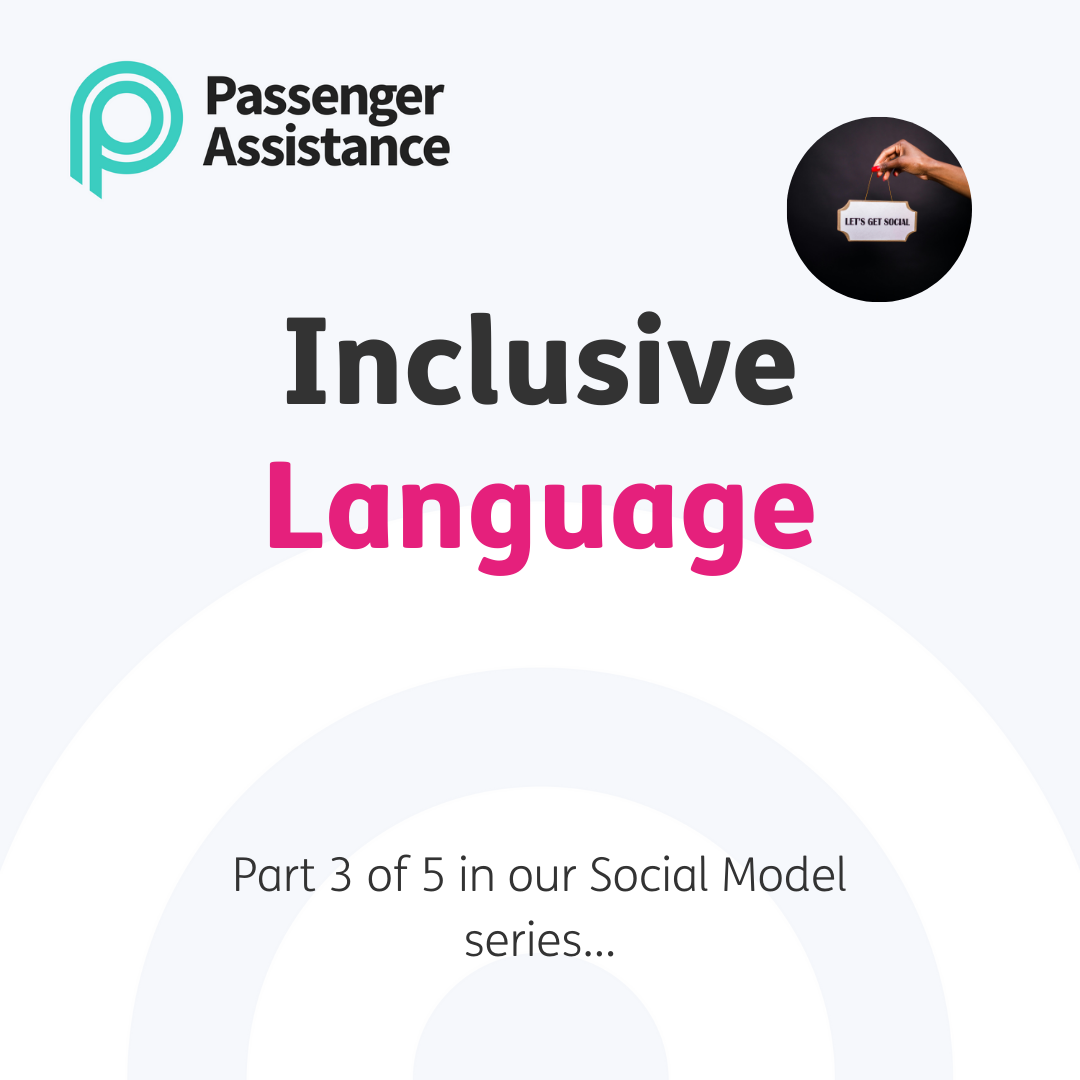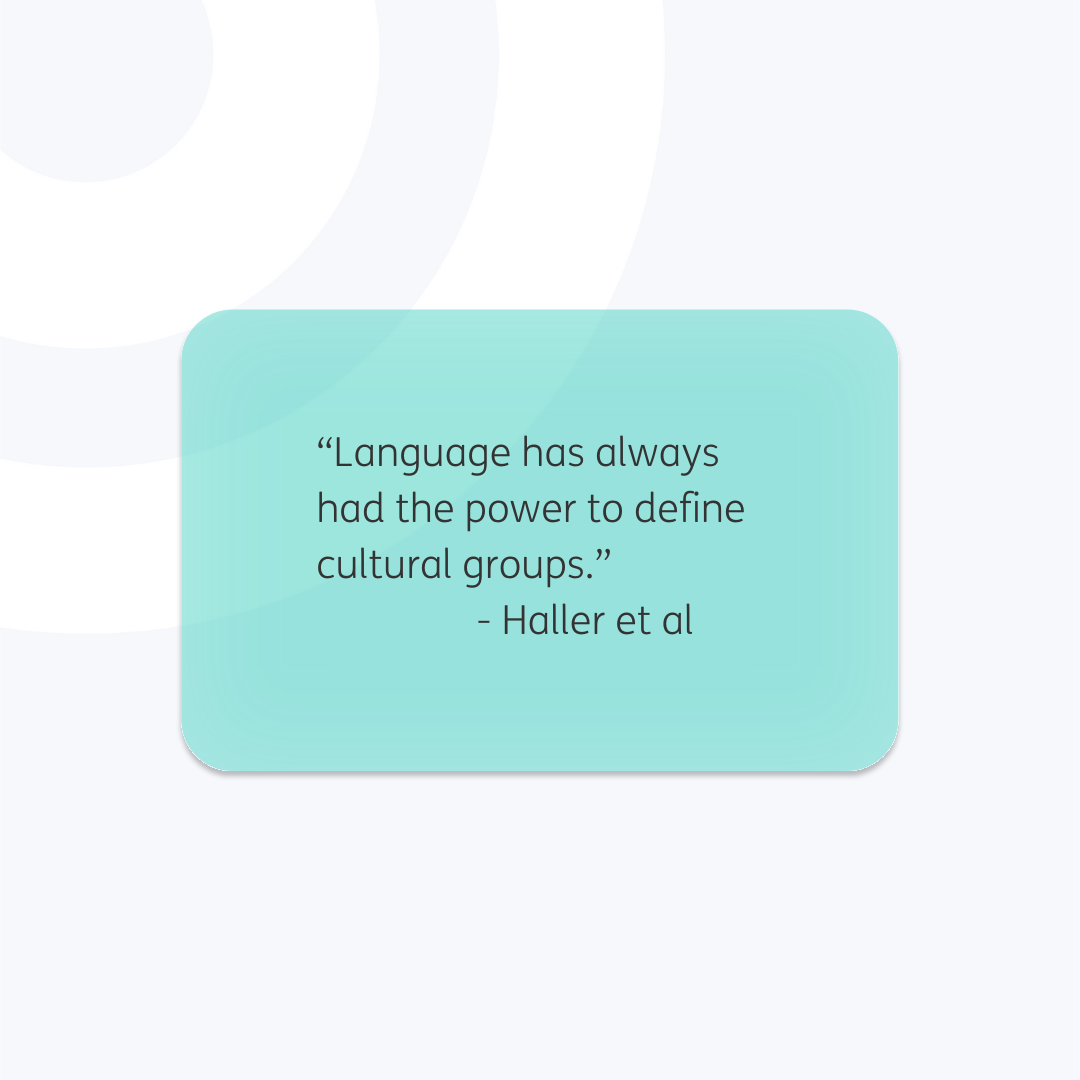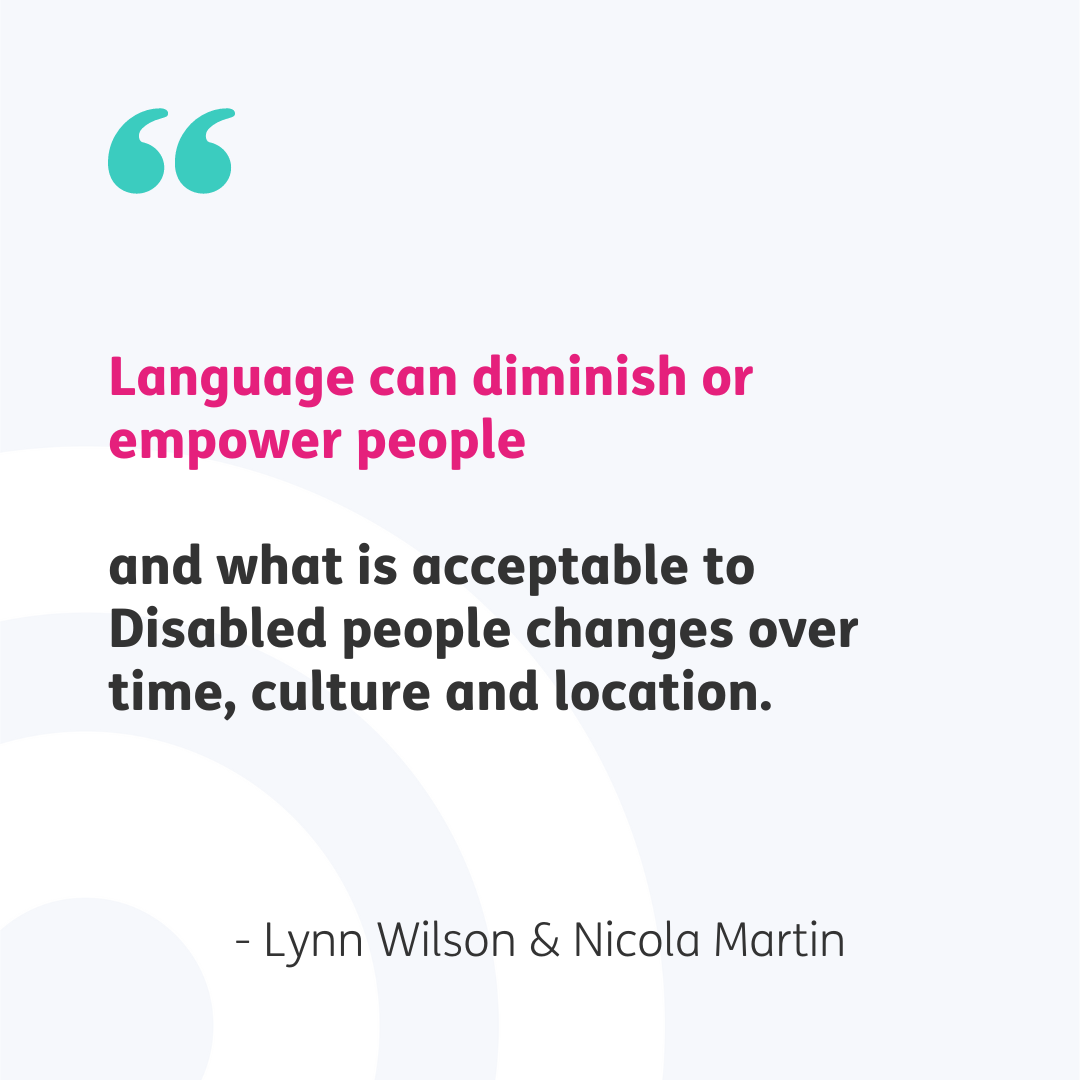Part 3 of 5 in our Social Model of Disability Blog Series…
Click here to jump to Easy Read version.

Background
Language is a powerful tool for defining social groups, and the language we use has real implications.
Historically, the language used to describe Disabled people has been medicalised or pitying, reflecting social perceptions of disability as negative.
The language used is largely influenced by the Medical and Charity Models of Disability.
The Social Model moves away from this type of language to more positive and accurate framing of experience.
Medicalised or charitable descriptions of disability exacerbate negative stereotypes and contribute to ableism.
Inclusive language refutes the idea of Disabled people as vulnerable and emphasises the importance of identity.

Identity First
Many Disabled people adopt identity-first language because it forefronts disability.
For example “Disabled person” is identity-first. Whereas “A person who is disabled” is person-first language.
Identity-first language can be related to disability pride.
It also links to the Social Model because it emphasises people with impairments are disabled by society.
This places responsibility on society itself to be more accessible.
Individual Preference
- Everyone has their own preferences when it comes to the language they use to describe themselves. Disabled people are not a homogenous group.
- Identity is an individual experience. It is important to be respectful of everyone’s preferred language.
At Transreport
We are a Social Model aligned company and we use identity-first language.
We recognise language shapes how we see each other, and the value we place on cultural groups.
Accessibility and inclusion is at the core of our ethos. We circulate best practice guides for language for internal colleagues and external partners.

Easy Read Version









